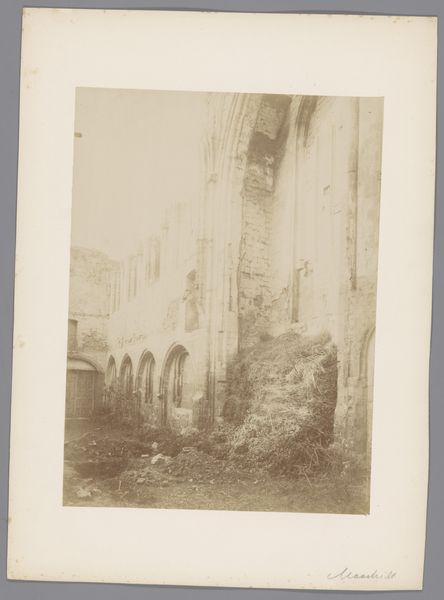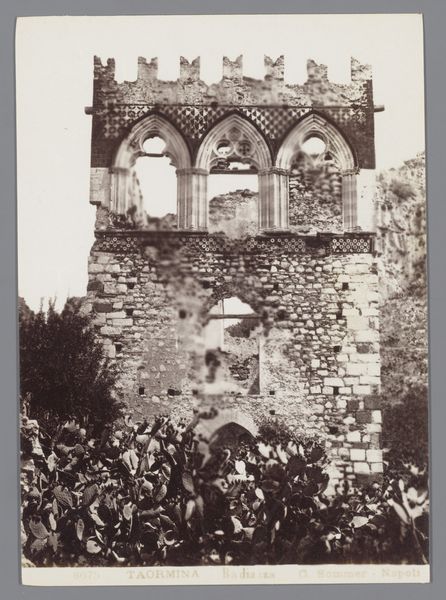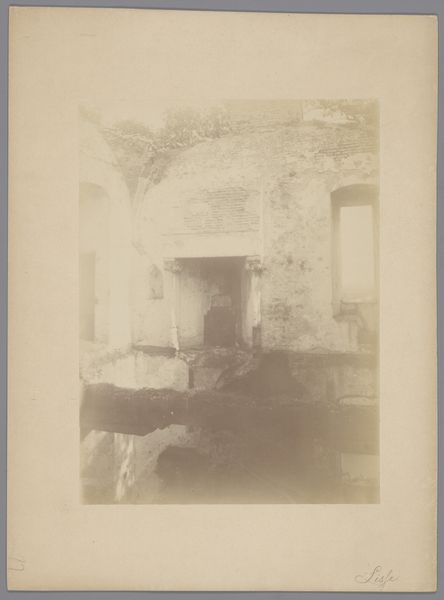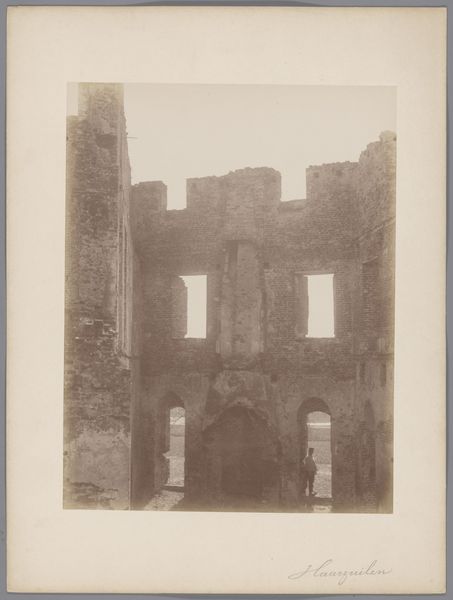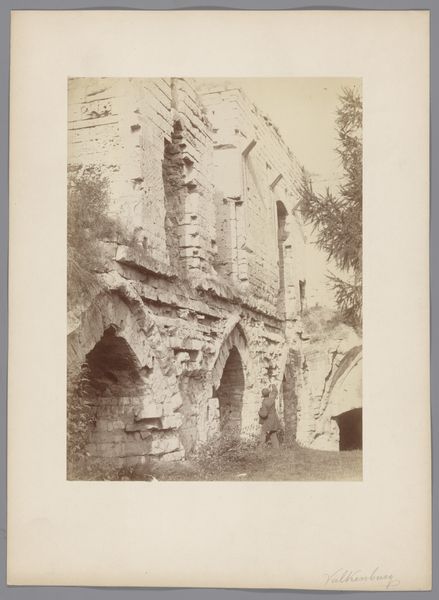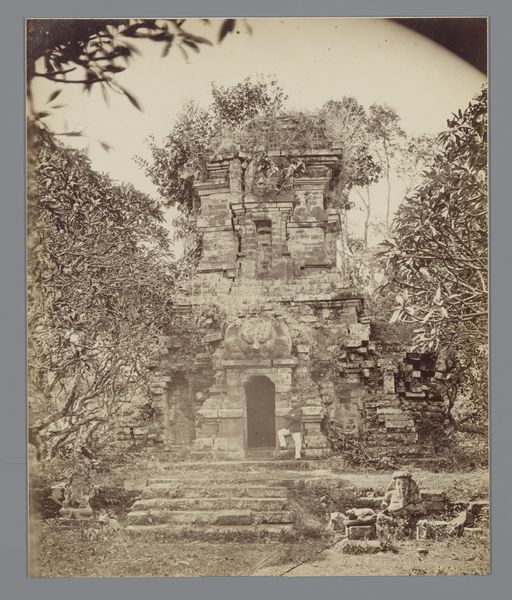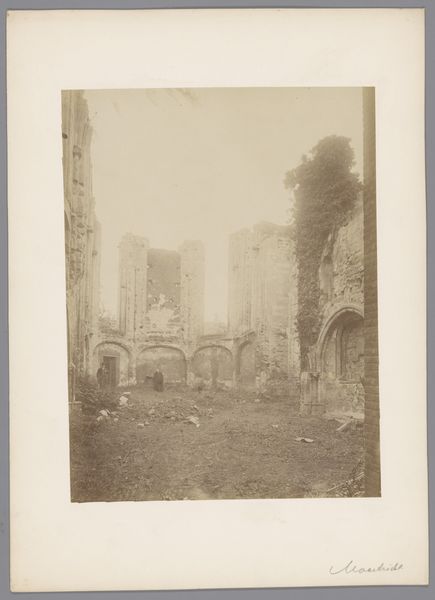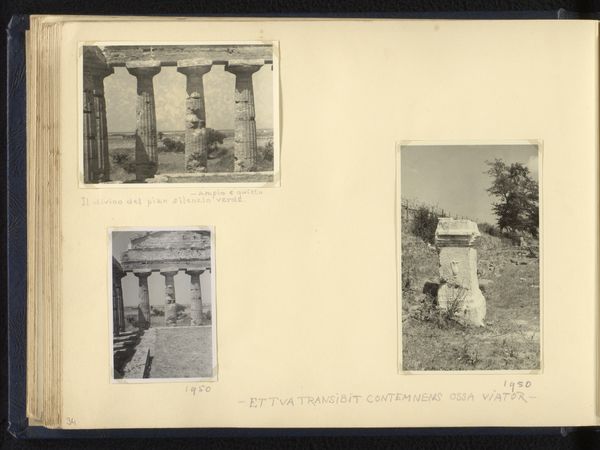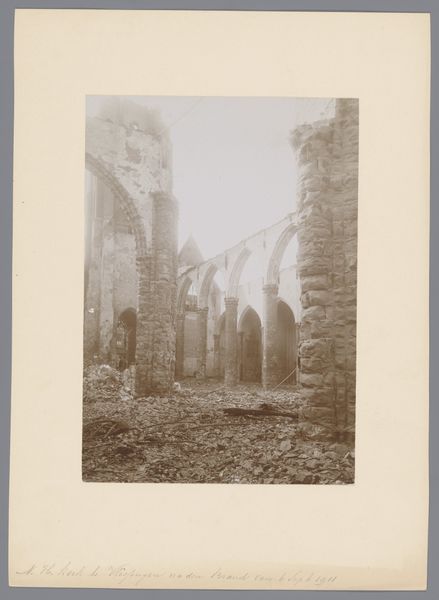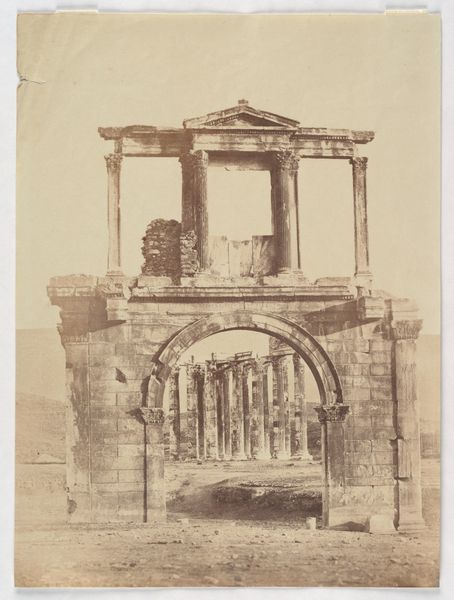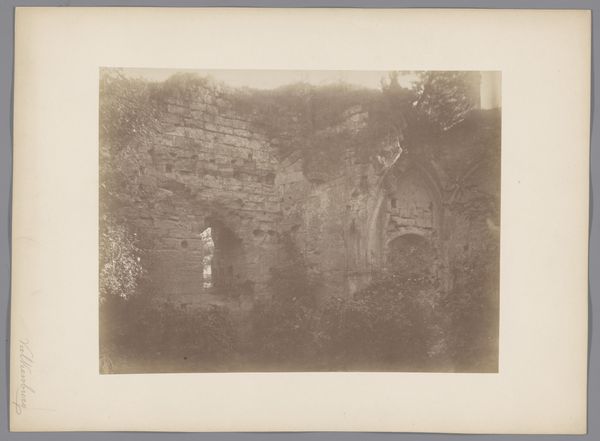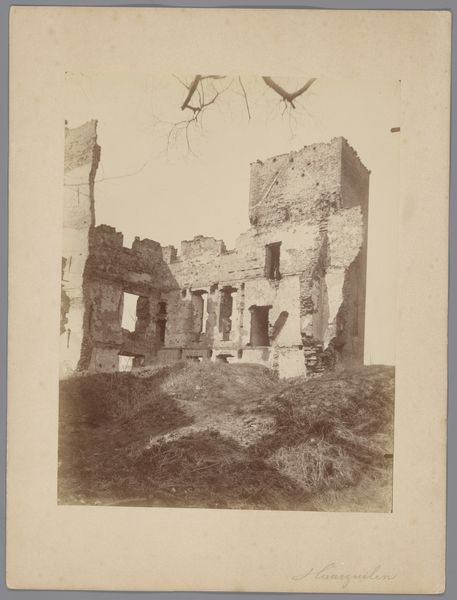
photography, albumen-print
#
greek-and-roman-art
#
landscape
#
photography
#
ancient-mediterranean
#
cityscape
#
albumen-print
Dimensions: height 226 mm, width 166 mm
Copyright: Rijks Museum: Open Domain
Curator: What a wonderfully evocative albumen print. This photograph, taken between 1880 and 1900, captures the "Remnants of the Baths of Taormina, Italy," as seen by the lens of Ledru Mauro. Editor: Immediately, I’m struck by the monochrome tonality; a subtle gradation creating a hazy dreamscape. It’s a picture filled with texture and light. Curator: It's quite intriguing how Mauro juxtaposes the enduring presence of the ancient Roman ruins against the then-contemporary fascination with landscape photography and the Grand Tour. The albumen printing process, popular during this period, allowed for mass production and dissemination of these views, making ancient sites like Taormina accessible to a wider audience. Editor: True, but let’s not overlook the pure form. The rigid verticality of the remaining columns contrasting with the rough, eroded stone. And see how those two figures, perhaps tourists, become integral compositional elements. They aren’t merely incidental, but human scales defining the monumentality of the architecture. Curator: I see your point. Consider also the social dynamics at play here. Tourism fueled a market for these images. Photography as a business gave individuals like Mauro agency, affording them a means of production, and allowing them a role in shaping the narratives we continue to have about ancient history and antiquity today. Editor: It also directs our attention to materiality itself; the image becomes an artifact mirroring the antiquity it represents. The surface texture of the albumen print parallels the aged textures within the depicted ruins, merging the ancient world and its modern visual representation. Curator: So you’re drawn to how this photograph underscores not just a location but also highlights the commodification and consumption of history, mediated through both the Grand Tour and photographic reproducibility. Editor: Precisely! The formal components, the texture, light, figures, reinforce this intersection of temporality, revealing an awareness of our gaze through shifting layers of perception and history. Curator: That is a brilliant perspective. It’s interesting to consider how a seemingly straightforward architectural study becomes so dense with multiple historical and artistic layers through our combined views. Editor: Indeed. A fleeting moment in time, captured and preserved, continually inviting deeper interpretation.
Comments
No comments
Be the first to comment and join the conversation on the ultimate creative platform.

